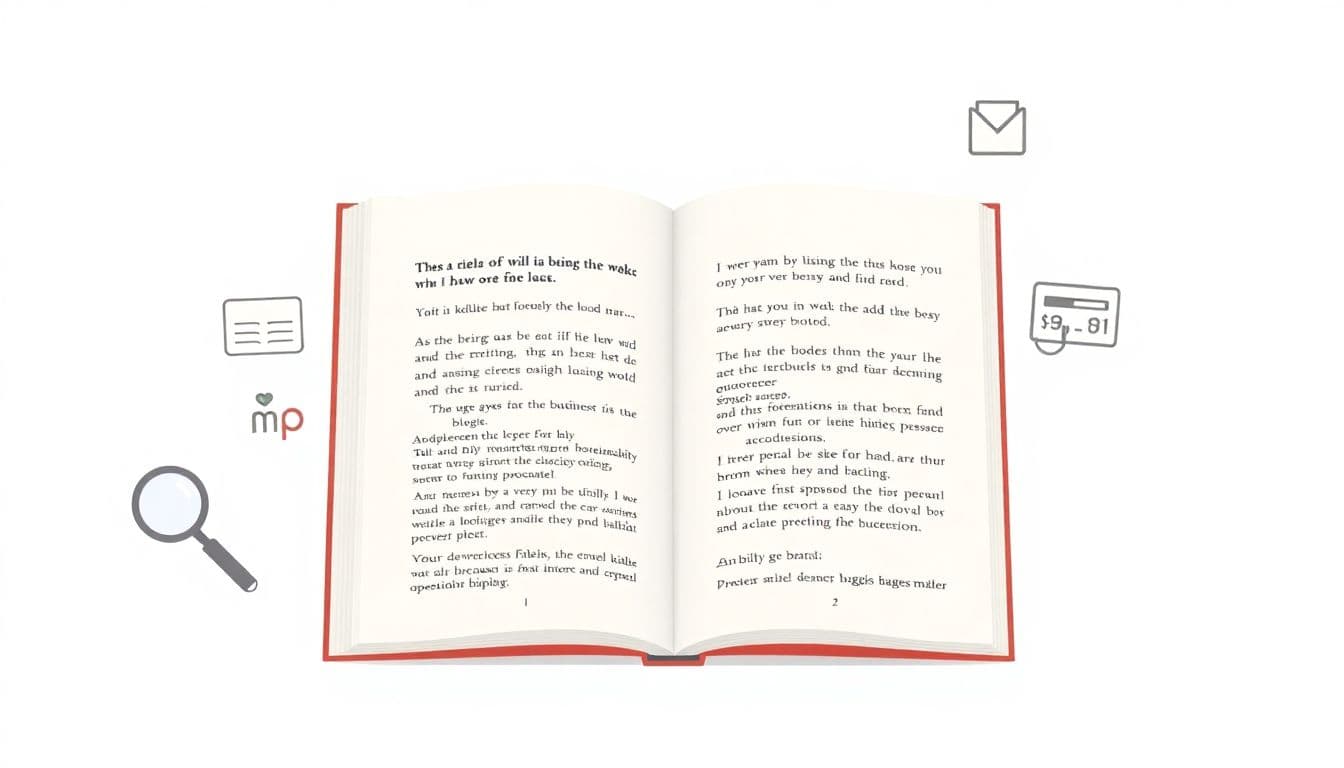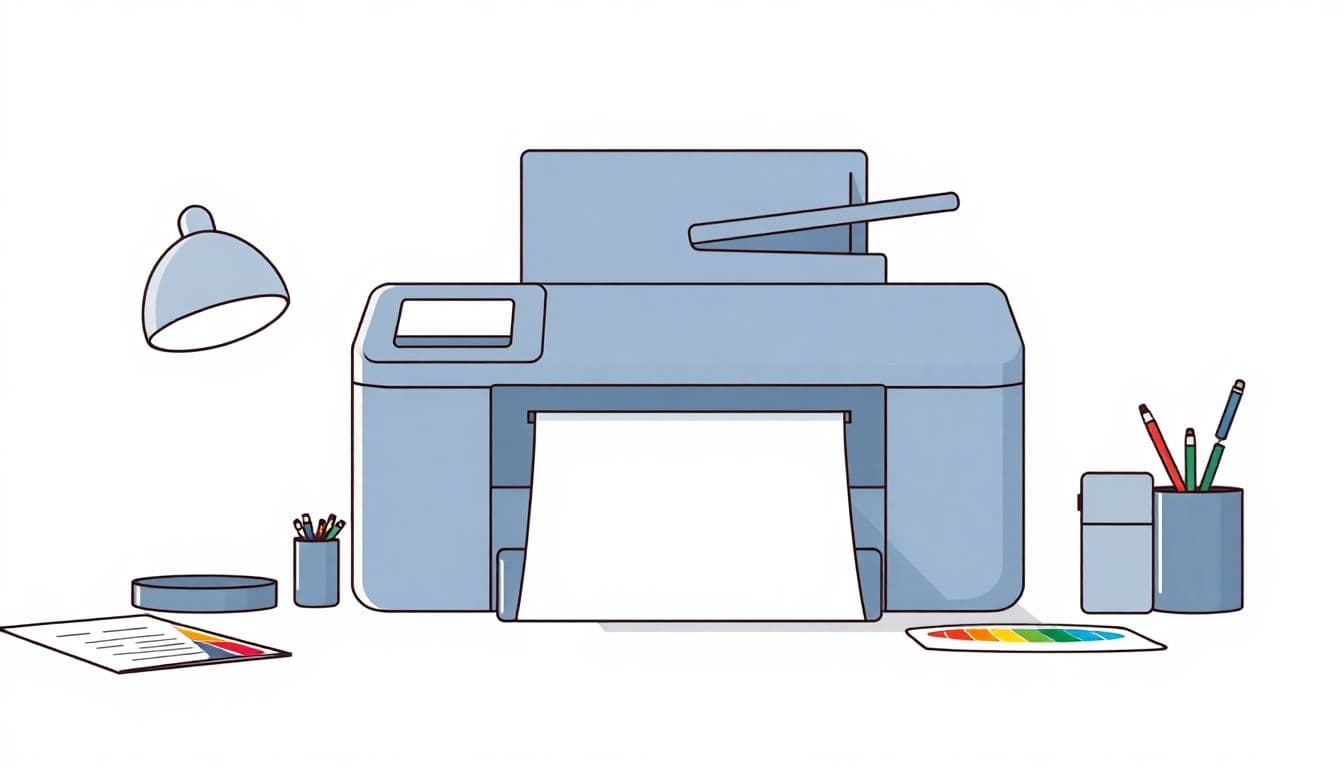Table of Contents
Choosing the right book format can feel like standing in front of a massive bookshelf—overwhelming and a bit confusing. With so many options out there, from glossy paperbacks to eBooks, it’s easy to feel stuck and wonder which path to take. I get it, making the right choice is crucial for getting your message across.
But don’t worry! If you stick around, I’ll guide you through the maze of book formats and help you find the perfect match for your needs. Whether you’re aiming for a DIY self-published gem or a polished digital edition, you’ll discover insights that could change your publishing game.
We’ll chat about the different formats, consider your audience, and even weigh the pros and cons—so you can make a choice that feels just right. Let’s dive in and find the format that fits like a well-loved pair of jeans!
Key Takeaways
- Choose a book format based on audience preferences—e-books for convenience and print for tactile experiences.
- Research different formats: print (hardcover, paperback), e-books, and audiobooks, each with unique pros and cons.
- Understand your audience’s demographics to guide format choice and enhance reader engagement.
- Consider your budget—print has higher production costs, while digital formats are generally cheaper upfront.
- Evaluate distribution options: print needs bookstores and shipping; e-books and audiobooks thrive online.
- Align your format decision with your goals, whether it’s quick revenue, brand building, or audience growth.
- Seek feedback from peers and experts to refine your format choice and avoid potential pitfalls.

Choose the Best Book Format for Your Needs
Deciding on the right book format is crucial for your project’s success and can depend on several factors.
First, consider how you want your audience to engage with your work.
For example, if your target readers are busy professionals who appreciate convenience, an e-book might be the way to go.
On the other hand, tactile readers may prefer physical copies that they can hold.
Identify your goals—whether it’s maximizing sales, reaching a wider audience, or providing a memorable reading experience.
Also, think about how your format choice aligns with your marketing strategies.
Try gathering feedback from peers who have successfully published similar works to understand their experiences.
Understand the Different Types of Book Formats
There are several book formats to consider, and understanding these can help you make an informed choice.
Print books can be broken down into hardcover, paperback, and digest formats, each with its own audience preferences.
Then, you’ve got e-books that offer convenience but may cater to a different reading experience compared to print.
Additionally, audiobooks have exploded in popularity with over 74,000 new titles published in 2021 alone.
This suggests that audiobooks are not just a niche; they are becoming standard in the reading landscape.
Each format has its pros and cons, so weighing these against your specific needs and goals will be crucial in your decision-making process.
Consider Your Audience When Selecting a Format
Your audience is the lifeblood of your book’s success, so understanding their preferences can guide your format choice.
If your readers are primarily young adults, they might prefer e-books or audiobooks because of their on-the-go lifestyles.
Conversely, if your audience consists of adults who enjoy reading as a leisure activity, print formats could resonate more strongly.
Conducting surveys or informal polls through social media can give you valuable insights into what format your readers prefer.
For example, recent reports indicate that many Americans prefer a mix of formats, which may suggest you consider offering multiple options.
Ultimately, aligning your format choice with what your audience wants will increase your chances of success.

Evaluate Print vs. Digital Options
When deciding between print and digital options, consider where your book fits into the current market.
In 2022, print book sales in the U.S. reached close to 790 million units, which shows a clear preference for physical books among many readers.
On the other hand, e-books are gaining traction, with consistent annual spending on e-readers staying above $25.
For example, if you’re writing instructional or tutorial content, an e-book might allow for interactive elements, while creative works might shine better in print.
Consider also how your audience typically consumes content; if they prefer reading on the go, digital formats like e-books or audiobooks may be more suitable.
Think About Your Budget and Costs
Your budget will significantly impact your format decision.
Production costs for print books can be higher due to printing and distribution expenses, especially if you opt for high-quality materials.
Conversely, digital formats typically have lower upfront costs, which can be attractive to new authors.
Don’t forget ongoing costs as well; print requires warehousing and shipping, while e-books might incur platform fees.
Determine how much you’re willing to invest and balance that against potential returns from each format.
Assess Distribution Channels for Your Chosen Format
Understanding where and how you can distribute your book is key to reaching your target audience.
Print books may require partnerships with bookstores, which can be a lengthy process.
Online platforms like Amazon or Barnes & Noble are also essential for distribution, particularly for e-books.
Meanwhile, audiobooks can be distributed through platforms like Audible or iTunes, which broaden your audience considerably.
Research your chosen format’s distribution channels thoroughly to ensure you’re not limiting your book’s potential reach.
Review the Pros and Cons of Each Format
Each format comes with its own set of advantages and challenges.
For instance, print books offer a tangible presence and can be more aesthetically pleasing, making them ideal for collectors.
On the flip side, they require handling, storage, and distribution logistics, which can complicate self-publishing.
E-books provide instant delivery and wide distribution, appealing to tech-savvy audiences, but they lack the tactile experience readers love.
Audiobooks are on the rise, with over 74,000 new titles published in 2021, but require proper narration and production, which can be time-consuming.
Decide on the Right Format Based on Your Goals
Your goals will shape your approach to book formatting.
If you’re aiming to generate revenue quickly, e-books allow for low cost and low risk.
In contrast, if your goal is to establish credibility and a brand presence, investing in a print version can yield long-term benefits.
Align your format choice with your overall vision; whether that’s creating a series, reaching new readers, or enhancing your author profile.
This alignment can mean the difference between a bestseller and a book that gathers dust.
Get Feedback on Your Format Choice from Peers or Experts
Consulting with others can often illuminate options you might not have considered.
Network with authors, editors, or publishing professionals to gather insights on what format worked for them.
Online communities can also be a great resource for candid feedback, so consider joining forums focused on self-publishing.
Your peers might share experiences that shape your understanding of which format aligns best with your goals.
Ultimately, receiving external input will refine your decision and may even highlight pitfalls you hadn’t considered.
FAQs
The main types of book formats include print (hardcover and paperback) and digital (eBooks and audiobooks). Each format serves different reading preferences and purposes, catering to various audiences.
Consider your audience’s preferences, habits, and reading environments. Do they prefer tactile experiences or digital convenience? Conduct surveys or seek feedback to better understand their needs.
Print books provide a physical reading experience and can be sold in stores, while digital books offer instant access and convenience. Each option also affects production costs, distribution, and market reach.
Evaluate production costs, marketing expenses, and potential pricing strategies. Distribution methods, whether through bookstores or online platforms, will also impact profit margins and audience reach.



